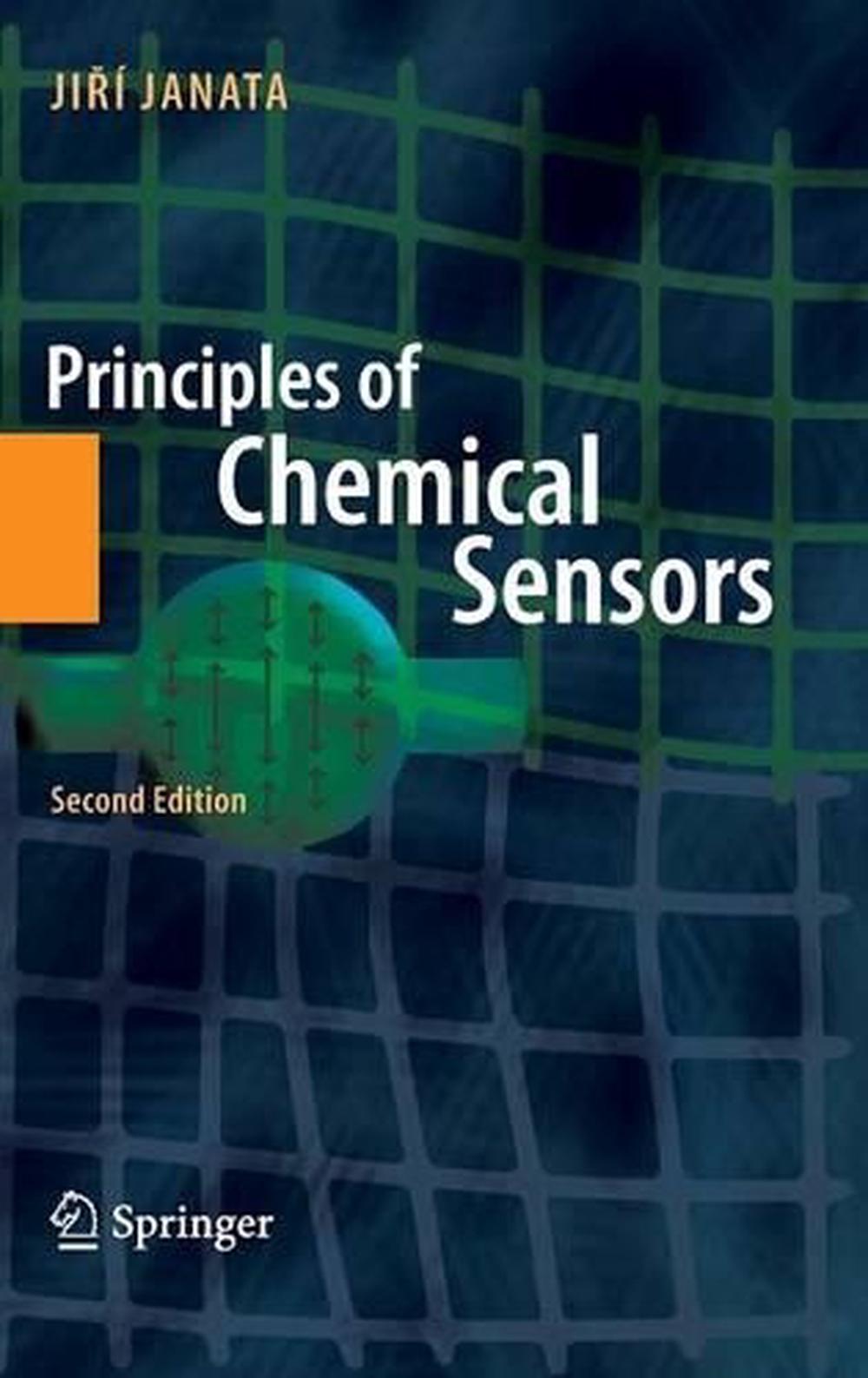
When you click on links to various merchants on this site and make a purchase, this can result in this site earning a commission. Affiliate programs and affiliations include, but are not limited to, the eBay Partner Network.
Principles of Chemical Sensors by Jiri Janata (English) Hardcover Book

- Item No : 135634955204
- Condition : Brand New
- Brand : No brand Info
- Seller : the_nile
- Current Bid : US $104.10
-
* Item Description
-
The Nile on eBay

Principles of Chemical Sensors
by Jiri Janata
Do not learn the tricks of the trade, learn the trade I started teachinggraduate coursesin chemical sensors in early 1980s, ?rst as a o- quarter (30 h) class then as a semester course and also as several intensive, 4–5-day courses.
FORMAT
HardcoverLANGUAGE
EnglishCONDITION
Brand New
Publisher Description
Do not learn the tricks of the trade, learn the trade I started teachinggraduate coursesin chemical sensors in early 1980s, ?rst as a o- quarter (30 h) class then as a semester course and also as several intensive, 4–5-day courses. Later I organized my lecture notes into the ?rst edition of this book, which was published by Plenum in 1989 under the title Principles of Chemical Sensors. I started working on the second edition in 2006. The new edition of Principles of Chemical Sensors is a teaching book, not a textbook. Let me explain the difference. Textbooks usually cover some more or less narrow subject in maximum depth. Such an approach is not possible here. The subject of chemical sensors is much too broad, spanning many aspects of physical and analytical chemistry, biochemistry, materials science, solid-state physics, optics, device fabrication, electrical engine- ing, statistical analysis, and so on. The challengefor me has been to present uniform logical coverage of such a large area. In spite of its relatively shallow depth, it is intended as a graduate course. At its present state the amount of material is more thancan be coveredin a one-semestercourse (45h). Two one-quartercourseswould be more appropriate. Because of the breadth of the material, the sensor course has a somewhat unexpected but, it is hoped, bene?cial effect.
Notes
Focus is on physical and chemical principles of operation of chemical sensors, not on their detailed description
Four main categories of sensing principles are covered: Thermal, mass, electrochemical and optical
Sensor applications are included only as examples
General topics include: Origins of selectivity, data reduction, elements of fabrication
Appendices allow non-specialists to follow the explanationsBack Cover
There are so many chemical sensor books on the market that adding one more would seem to be a rather unnecessary exercise. My aim has been to provide material that college or graduate level instructors could use when teaching this subject. The focus is on operating principles, rather than on description of specific sensor or even types of sensors. People who regularly referee sensor manuscripts and research proposals may also find it useful as a reference, for testing one or another dubious proposed sensing scheme. Unfortunately, some strange ideas often get through the review process and become a permanent part of the knowledge database. A "food-for-thought" section has been added at the end of each chapter, which is intended to provoke probing questions about such "schemes". Since this is a never-ending process a "food-for-thought" website has been established as a permanent "blog" that supplements this book. It can be accessed at:
Table of Contents
Introduction.General response curve.Origins of selectivity.- Introduction.Equilibrium-based selectivity.Kinetic selectivity.Mass transport selectivity.Design of selective layers.- Introduction.General.Push-pull operation.Thermometers.Equivalent circuits.Examples of thermal chemical sensors.- Introduction.Mass sensors based on piezoelectric materials.Non-piezoelectric mass sensors.- Introduction.General rules of electrochemistry.Nature of interfaces.Nature of the current-Voltage curve.Determination of cell parameters: experimental methods.- Ion sensors.Potentiometric sensors for neutral species.- General considerations.Microelectrodes.Oxygen electrodes.Clark electrode.Amperometric selectivity.Amperometric fuel cells.High temperature limiting current sensors.- Introduction.Chemiresistors.AC conductometric sensors.
Review
From the reviews of the second edition:"Introduces the main operating principles of chemical sensors … . addressed to students of chemistry, physics, and engineering who want to gain knowledge of the working principles of chemical sensors. … excellent 'teaching' book for graduate and master students … . experienced researchers in this field can also find useful information on basic concepts of sensing principles. … provide the reader with basic knowledge of this field. … a good 'teaching' book on chemical sensors that could be used in introductory courses on this topic." (María Cruz Moreno-Bondi, Analytical and Bioanalytical Chemistry, Vol. 399, 2011)
Long Description
Do not learn the tricks of the trade, learn the trade I started teachinggraduate coursesin chemical sensors in early 1980s, ?rst as a o- quarter (30 h) class then as a semester course and also as several intensive, 4-5-day courses. Later I organized my lecture notes into the ?rst edition of this book, which was published by Plenum in 1989 under the title Principles of Chemical Sensors. I started working on the second edition in 2006. The new edition of Principles of Chemical Sensors is a teaching book, not a textbook. Let me explain the difference. Textbooks usually cover some more or less narrow subject in maximum depth. Such an approach is not possible here. The subject of chemical sensors is much too broad, spanning many aspects of physical and analytical chemistry, biochemistry, materials science, solid-state physics, optics, device fabrication, electrical engine- ing, statistical analysis, and so on. The challengefor me has been to present uniform logical coverage of such a large area. In spite of its relatively shallow depth, it is intended as a graduate course. At its present state the amount of material is more thancan be coveredin a one-semestercourse (45h). Two one-quartercourseswould be more appropriate. Because of the breadth of the material, the sensor course has a somewhat unexpected but, it is hoped, bene'cial effect.
Review Quote
From the reviews of the second edition:Introduces the main operating principles of chemical sensors … . addressed to students of chemistry, physics, and engineering who want to gain knowledge of the working principles of chemical sensors. … excellent 'teaching' book for graduate and master students … . experienced researchers in this field can also find useful information on basic concepts of sensing principles. … provide the reader with basic knowledge of this field. … a good 'teaching' book on chemical sensors that could be used in introductory courses on this topic. (María Cruz Moreno-Bondi, Analytical and Bioanalytical Chemistry, Vol. 399, 2011)
Feature
Focus is on physical and chemical principles of operation of chemical sensors, not on their detailed description Four main categories of sensing principles are covered: Thermal, mass, electrochemical and optical Sensor applications are included only as examples General topics include: Origins of selectivity, data reduction, elements of fabrication Appendices allow non-specialists to follow the explanations
Details
ISBN0387699309Author Jiri JanataLanguage EnglishEdition 2ndISBN-10 0387699309ISBN-13 9780387699301Media BookFormat HardcoverYear 2009Short Title PRINCIPLES OF CHEMICAL SENS-2EPages 373DEWEY 54Imprint Springer-Verlag New York Inc.Place of Publication New York, NYCountry of Publication United StatesPublication Date 2009-07-06DOI 10.1007/b136378AU Release Date 2009-07-06NZ Release Date 2009-07-06US Release Date 2009-07-06UK Release Date 2009-07-06Publisher Springer-Verlag New York Inc.Edition Description 2nd ed. 2009Alternative 9781489983381Illustrations XV, 373 p.Audience Professional & VocationalReplaces 9781475762594


-
- The Lost Super Foods
- $ 37.00
- The Self-Sufficient Backyard
- $ 37.00
- A Navy Seals BUG IN GUIDE
- $ 39.00
- Childrens Books Phonics Lot 60
- $ 34.99
















